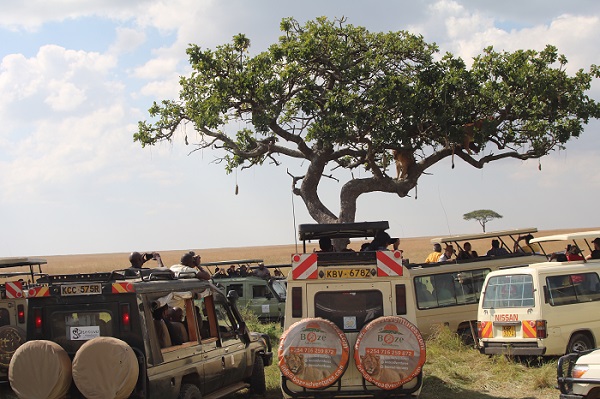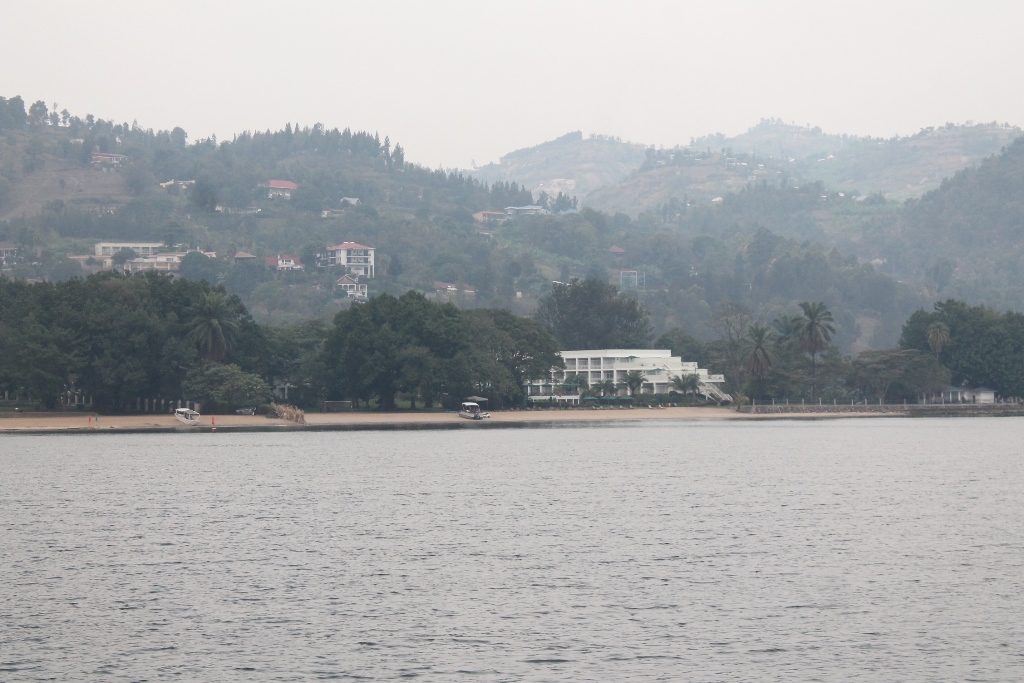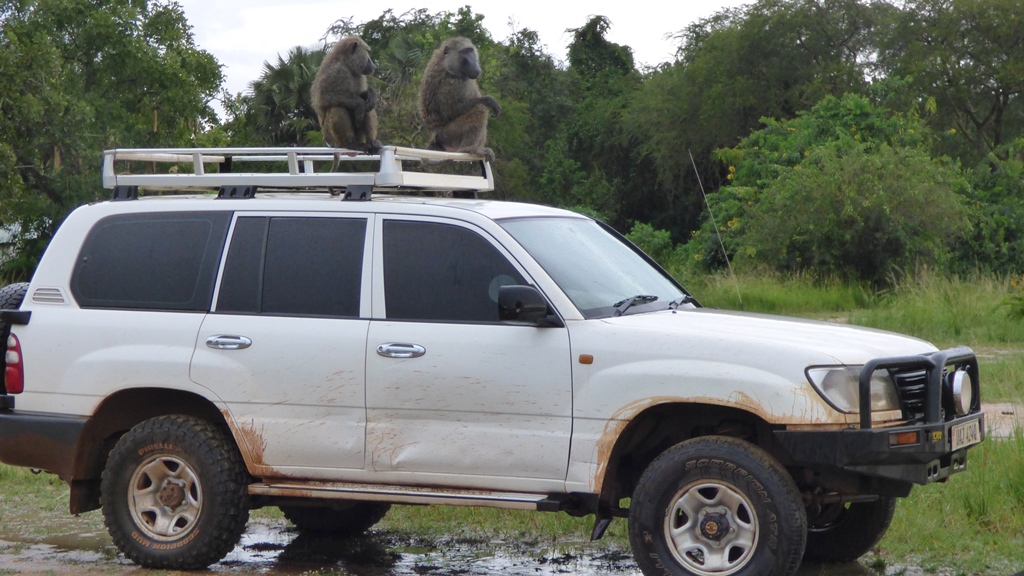 The Masai Mara National Reserve or simply The Mara, is Kenya’s most popular destination for safaris and tours attracting hundreds of thousands of tourists every year to enjoy the African savannah and see lots of animals, and for many to witness the Great Migration
The Masai Mara National Reserve or simply The Mara, is Kenya’s most popular destination for safaris and tours attracting hundreds of thousands of tourists every year to enjoy the African savannah and see lots of animals, and for many to witness the Great Migration
The time you decide for the safari trip to the Mara will affect the kind of wildlife experience you will have in the Mara. Depending on what you want to experience or see, it is important to know the best time to go.
Below I will discuss points to consider when deciding the best time for you visit the Mara…
So, what is the best time to visit the Masai Mara for your best safari & bush experience?
The great migration season (June – Oct)
The great migration time is probably the best time for a safari in the Mara. During the migration season, a stampede of millions of animals comprising of wildebeest, zebra, and antelopes cross over from the Serengeti of Tanzania into the Masai Mara in Kenya
The migration starts arriving into the Mara in June with a few numbers trickling, and the numbers keep swelling well through July and by August the entire landscape of the migration route is covered by wildebeests and zebras. It is such a sight!
If your target is the migration, then June – October is the best time to visit the Mara, July – August sees the biggest numbers of the animals but this is also the peak tourism season with lots of tourists in the park.
Best time to see the big cats in the Mara (Cats are better seen after migration)
Masai Mara is rich in big cats including lions, leopard, hyena, and cheetah. It is probably the best place to see lions and leopards in Kenya..
Are lions best seen during the migration?
There is the assumption that the lions and other cats can best be seen during the great migration because there is easy prey for them. True, there is easy prey for them and so they do not struggle to find what to eat. However, this also means they do not move widely in search for prey. They find prey easily, and have their stomachs full most of the time and so spend the days lazing under thickets with less movements… Sneaking on idle lions tucked away under thickets is not probably your ideal lion sighting?
Best time to see cats is not during the migration
When the migration is gone from the Mara there is a reduced amount of prey for the cats which forces the lions and other cats to move widely and actively to hunt the remnant zebras, wildebeest and antelope. The lions will also try their luck on the big animals such as the giraffes and elephants. It is therefore easier to find lions in action or on the move in the Mara when there is scarcity of prey.
Want that once in a lifetime opportunity to see lions stalking and taking on a buffalo or an antelope? Well, the best chance could be that time with less prey in the Mara when the migration is long gone.
Elephants are displaced by the migration
The Mara has massive herds of elephants and seeing them match through the plains is quite satisfying. If your favorite animal is the elephant and wish for the best sightings of the massive tuskers and their little ones, then it is best to visit the Mara after the migration has left.
The Elephants are irritated by the constant “groaning” sound of the wildebeests and therefore will try to keep as far away from them as possible. Elephants move to the hills and the thickets where they can enjoy peace away from the noise of the migration ‘horde’.
However, note that you can’t see miss elephant sightings on any day including during the migration, but the best sightings is without the migration in the Mara.
Wet season vs Dry season
When planning to visit Masai Mara it is important to know whether it will be a wet/rainy season or dry season in Kenya.
The dry season is June, July, August and September. During this time the days are sunny with little chances of rainfall. The dry season is also the great migration season which is a good coincidence. The advantage of the dry season is you will enjoy the warmth of the sun. The drive tracks are dry and therefore you can easily cover all the corners of the park even without a 4X4 jeep. The disadvantage is that there are huge crowds of tourists in the park that causes competition at sightings. The drive tracks are also dusty which can lead to flue and lung infections for those with sensitive breathing systems.
Note that July is the coldest month of the year with very chilly mornings. If you want warmer weather you may not visit in July.
The wet season is from October to May. The most rains though are experienced in March, April & May with nearly daily rains. The wet season brings challenges in covering the park especially during the long rains of March to April. But the scenery is at its best with lush green plains and hills. Animals are also less mobile providing great sightings. The cats that tuck away under thickets during the dry season to shelter from the sun are now out in the open yearning for warmth. The rivers are filled with gushing water and if you are staying at a lodge/camp along a river your experience will be enhanced. The wet season also sees fewer tourists which is a good time if you want less competition at sightings.
2 Comments
Abdul wahab December 4, 2022
I think April would be ideal month to visit Mara because I there during April & migration was on & found many activities along the Sawana .
ReplyDavid @ Nature Trails East Africa January 7, 2023
Thanks for sharing Mr. Wahab! If you found the migration still on in April, a month when there are fewest tourists then you must have had the best safari in the Mara. Thanks for visiting and come back soon!
ReplyLeave a comment Cancel reply
Archives
- March 2025 (1)
- February 2025 (1)
- January 2025 (1)
- November 2024 (2)
- October 2024 (3)
- May 2024 (1)
- February 2024 (1)
- January 2024 (2)
- November 2023 (2)
- September 2023 (1)
- July 2023 (8)
- June 2023 (14)
- May 2023 (1)
- April 2023 (1)
- March 2023 (3)
- February 2023 (6)
- January 2023 (6)
- December 2022 (1)
- November 2022 (1)
- October 2022 (2)
- September 2022 (1)
- August 2022 (1)
- May 2022 (17)
- April 2022 (5)
- March 2022 (7)
- February 2022 (3)
- January 2022 (7)
- December 2021 (7)
- November 2021 (2)
- October 2021 (1)
- September 2021 (2)
- August 2021 (2)
- July 2021 (6)
- June 2021 (1)
- May 2021 (4)
- April 2021 (3)
- March 2021 (2)
- February 2021 (2)
- January 2021 (14)
- November 2020 (2)
- September 2020 (1)
- March 2020 (1)
- February 2020 (1)
- August 2019 (1)
- September 2016 (1)
- June 2016 (1)
- May 2016 (1)

